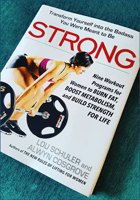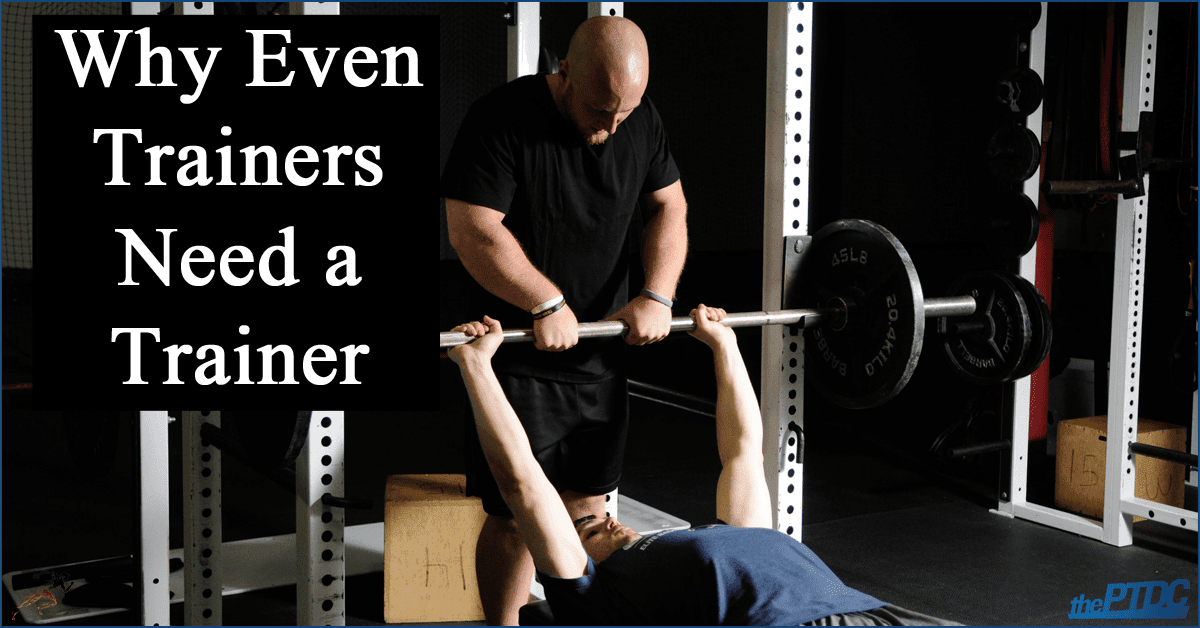This article is by Lou Schuler, author of the newly released book Strong: Nine Workout Programs for Women to Burn Fat, Boost Metabolism, and Build Strength for Life
The best part of writing books with Alwyn Cosgrove is getting first crack at the workouts. The day he sends me the program for our next book is like Christmas for me.
Partly it's because the workouts are the heart of each book, and I don't really know what I'm going to be working with until I see them. But mostly it's because I get to do them myself.
Most of you reading this train clients in gyms. I don't. My personal training certification is the Certified Strength and Conditioning Specialist (CSCS) from the NSCA, along with 23 years' worth of experience writing about fitness. That's aside from the fact I've been working out since I was 13. But I'm still not especially good at writing programs for myself. When I do put a solid routine together, I inevitably stick with it long past the point where it stopped being effective.

"When I do put a solid routine together, I inevitably stick with it long past the point where it stopped being effective."
I had thought this was a problem unique to my circumstances as a stay-at-home fitness pro. But when Alwyn and I sat down to start work on Strong: Nine Workout Programs for Women to Burn Fat, Boost Metabolism, and Build Strength for Life, our sixth book together, he told me something that caught me by surprise: When he goes into the gym to work out, he uses programs written by someone else—in his case, Craig Rasmussen, one of his top trainers at Results Fitness.
To Alwyn, the logic is simple:
"When I started in tae kwon do, I had a coach. When I went to college, I had professors. I've never felt that training should be any different."
Even when he wrote his own programs, Alwyn told me, he always had someone look over them. "I always wanted a second pair of eyes, at least."
Suddenly I didn't feel so bad about my own struggle to write good programs for myself. I also realized there are at least four good reasons why all of us need our own trainers.
1. It makes you a better lifter
My own programs inevitably focus on my best lifts (although these days it'd be more accurate to call them my least-worst lifts) and neglect my weak links. You can guess where that takes me. "We always think we're more advanced than we are," Alwyn says.
It's a problem we've addressed many times over the years with our readers, who think the introductory workouts in each of our books are too simple, until they try them and find they're a lot more challenging than they expected. But it also applies to us.
"There's always at least one exercise I don't like," Alwyn says. "And I don't like it because I'm not good at it."
For me, it's single-leg exercises, which I don't have a problem with in any philosophical sense, but typically omit from my self-designed programs. They're a big reason why the Strong workouts, which I took for a test drive last winter, so thoroughly kicked my ass.
Here's an example of a nice single-leg exercise combo courtesy of Tony Gentilcore. In the video below he demonstrates a Bulgarian split squat to Romanian deadlift (RDL) combo:
Bulgarian Split Squat To RDLWhether you're in a crunch for time or really just want to hammer the legs, the Bulgarian split squat to Romanian single-leg deadlift is fierce. Give this one a go with some of your more seasoned clients to fit more exercise volume into a shorter time window.*** Personal trainer? We've got everything you need to be more successful, Learn more here: theptdc.com/about-us ***---This video is property of Tony Gentilcore and is used with permission. Learn More about Tony at www.tonygentilcore.com and subscribe to him on Youtube at www.theptdc.com/tony-youtube
Posted by Personal Trainer Development Center on Thursday, October 15, 2015
I should note here that Strong is a follow-up to our most successful book, The New Rules of Lifting for Women. (Note from Jon: NROL for Women is so good I listed it as one of the best books for personal trainers.) Those workouts also kicked my ass. They may be created with women in mind, but I'll be surprised if any guy tries them and finds them too easy.

Lou and Alwyn's new book Strong.
2. It makes you a better trainer
One of the pitfalls of the fitness profession is the need to market ourselves. Some are better at it than others (and most are better than me), but all of us use marketing for the same basic reason: to impress upon others how good we are at what we do, and how valuable our services will be to those we're trying to reach.
Because we all work so hard to create an aura of superiority, we run the risk of falling for our bullshit.
I don't mean bullshit in the sense that you aren't actually good at your job. I mean the part where you believe you're so much better than your fellow trainers that you wouldn't ask one of them for help.
That's exactly why Alwyn insists that all the trainers at Results Fitness—including Rachel, his wife and co-owner—use programs designed by their colleagues. To Alwyn, it's just good business. They don't want to try a new exercise or piece of equipment on their clients until they've tried it on themselves. And they can't fully test those exercises or tools without incorporating them into programs.
"It's very hard to experiment on yourself without some level of bias creeping in," Alwyn says. "Having someone else develop your programs allows him to test things out on you, sometimes without your knowledge."
A true test gives you data, and data gives you information you can use for the benefit of your clients.
READ ALSO: What's the Difference Between a Personal Trainer and a Fitness Coach?
3. It makes you healthier
As much benefit as I get from done-for-you programs like Alwyn's, some of the problems I face as an aging gym rat require a more specialized approach. Until recently, for example, my right shoulder was killing me.
READ ALSO: What Are the Rules for Training Older Clients?
It would feel good for a couple of weeks, I'd go a little heavier in the weight room, and then I'd reinjure it doing something silly like reaching into the backseat of my car for a piece of paper. It got to the point where it hurt to reach into my front pocket.
So I turned to Dean Somerset, who wrote a program to help me correct the problem. For the past few weeks I've been wearing out bands and doing so many Y's, T's, I's, and W's that they're officially my least favorite parts of the alphabet. But it sure is nice to reach for something without feeling like my shoulder joint is coming apart.

4. It makes the fitness profession better
When Alwyn speaks to fitness pros at conferences and seminars, he often asks these questions:
"Do you think a trainer is valuable?" All hands go up. "Do you think a good trainer can get you to your goals faster than you could on your own?" Again, he looks out at a sea of raised hands. "Do you think a good trainer is worth the investment?" Same response.
Then he asks, "So who's your trainer?"
If the audience includes competitive athletes—powerlifters, strongmen, Olympic lifters, bodybuilders—they'll be able to name a trainer. If it includes people who're rehabbing injuries, they can usually name a physical therapist. But what about personal trainers?
"Every reason that you can come up with as a trainer for why you don't need or shouldn't hire a trainer, is the exact same reason your prospective clients have for not hiring you," Alwyn says. "If you can't convince yourself, how do you convince a prospect?"
One of the biggest selling points, from you to your clients, is that you'll take them out of their comfort zone. You'll see the imbalances and neglected movement patterns they either ignore or haven't yet discovered. A good trainer can do the same for you: show you what you either can't or prefer not to see.
If nothing else, having a coach pull you out of your comfort zone gives you a sense of what your clients experience every time they train with you. The feedback you then give your coach not only elevates his game, it gives both of you a standard you can apply to your own practice.
At best, you'll learn exercises and techniques you wouldn't otherwise have come across. You get better, your clients get better, and the profession we all share gets better.











